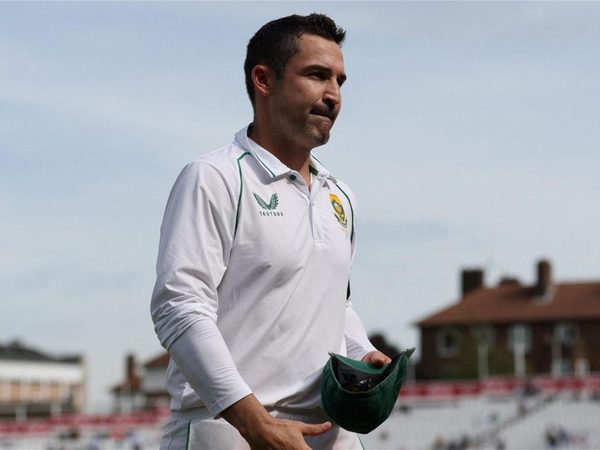
The 2005 Ashes is the series that all England series are subsequently compared against. A fast-improving England team took on the world’s dominant side and claimed victory in one of the most memorable series in the game’s history, overcoming what was then a wretched recent record against Australia.
This summer, England overcame a similarly miserable run of results. England had won just one of their previous 17 Tests going into the 2022 English summer before their fortunes flipped in dramatic fashion, winning six of their next seven Tests under the new captain Ben Stokes. How do the two sides – England in 2005 and England 2022 – compare and what would a combined side look like?
Both sides had a similar balance to them; six batters, an all-rounder at six, a wicketkeeper-batter at seven, a frontline spinner plus three specialist quicks, which makes picking this XI slightly easier than it otherwise would be.
Statistics refer to a player’s record in either the 2005 Ashes or the 2022 summer
Openers
Marcus Trescothick: 430 runs @ 43.10; no hundreds, two fifties, HS: 90
Andrew Strauss: 393 runs @ 39.30; two hundreds, no fifties, HS: 129
The most straightforward part of the selection. While Alex Lees and Zak Crawley had their moments in 2022, the pair generally struggled for consistency against three formidable new-ball attacks. 17 years previously, Marcus Trescothick and Andrew Strauss set the tone for England at the top of the order. Strauss was the only player on either side in 2005 to score multiple centuries across the series while Trescothick, despite not reaching three figures, averaged over 40.
The middle order
Ollie Pope: 456 runs @ 38; one hundred, three fifties, HS: 145
Joe Root: 615 runs @ 68.33; three hundreds, one fifty, HS: 176
Jonny Bairstow: 681 runs @ 75.66; four hundreds, one fifty, HS: 162
There is one dead certainty here. Joe Root, despite enduring a quiet series against South Africa, is nailed on ahead of Ian Bell in this team. Root was imperious at the start of the summer, rattling off three centuries in the first half of the summer. Either side of Root, though, there are some tough decisions to make.
Ollie Pope pips Michael Vaughan to a spot at three. Vaughan’s leadership was instrumental to England’s success in 2005 but, aside from his hundred at Old Trafford, struggled with the bat. Pope enjoyed somewhat of a breakout summer in an unfamiliar position at three, scoring his first home Test hundred at Trent Bridge and making crucial contributions in victories over South Africa at Lord’s and New Zealand at Headingley.
Then we need to make a decision between Kevin Pietersen and Jonny Bairstow at five – both men top-scored for their sides in the two periods we’re looking at. Pietersen announced his arrival in the Test game with a pair of audacious half-centuries on debut and then sealed the series in England’s favour with a landmark maiden Test century on the final day of the series. But there’s no looking past Bairstow. No one has scored more than Bairstow’s four Test hundreds in an English home Test summer – the Yorkshireman was absolutely pivotal to England’s success in 2022.
All-rounder
Andrew Flintoff
402 runs @ 40.20; one hundred, three fifties, HS: 102
24 wickets @ 27.29; one five-for, BBI: 5-78
Flintoff vs Stokes. The two talismanic all-rounders who operated as the beating hearts of their respective teams. There is very little to separate them – Stokes is the pre-eminent all-rounder of his generation while Flintoff was at the very peak of his powers in 2005. Their statistics across the two periods of interest are remarkably similar, both averaging around 40 with the bat and in the mid-twenties with the ball. Both left indelible marks on the two summers but we’re just going to go with Flintoff – he is the first English player that comes to mind when you think of the 2005 Ashes and his contributions had more of a role in his side’s ultimate success than Stokes’.
Wicketkeeper
Ben Foakes: 240 runs @ 40; one hundred, one fifty, HS: 113*
One of the simpler decisions. Foakes had an excellent first home summer as a Test cricketer, providing stability with the bat at seven and was characteristically efficient behind the stumps.
Spinner
Jack Leach: 16 wickets @ 36.25; two five-fors, BBI: 5-66
Leach’s spot in the side was under some pressure, from the outside at least, at the start of the summer. A 10-wicket match haul at Headingley illustrated the value that he can provide in home conditions, even if Leach was quiet throughout much of the summer in Tests that were often fast-moving and dominated by seamers. He earns selection in this team ahead of Ashley Giles who took his wickets at nearly 60 during the 2005 Ashes, even if he did have his moments – the delivery to Damien Martyn at Old Trafford and crucial second innings runs at Trent Bridge and The Oval.
The seamers
Simon Jones: 18 wickets @ 21; two five-fors, BBI: 6-53
James Anderson: 27 wickets @ 17.66; one five-for, BBI: 5-60
Matthew Hoggard: 16 wickets @ 29.56; no five-fors, BBI: 4-97
We need to whittle eight names down to three. Simon Jones and James Anderson are the two most obvious picks – Jones had a remarkable strike rate of just 34 in 2005 while Anderson averaged 17 with the ball in the 2022 summer.
Stuart Broad started the 2022 summer slowly while Matt Potts was left out for the final two Tests of the season for Ollie Robinson who only played two games himself: those three can probably be discounted, as harsh as that may seem. That leaves Steve Harmison and Matthew Hoggard, both of whom had excellent campaigns in 2005. We’re just going for Hoggard, who was excellent against left-handers, dismissing Hayden three times, and both Langer and Gilchrist twice. Only three of his sixteen wickets were of tailenders, whereas seven of Harmison’s victims were.








